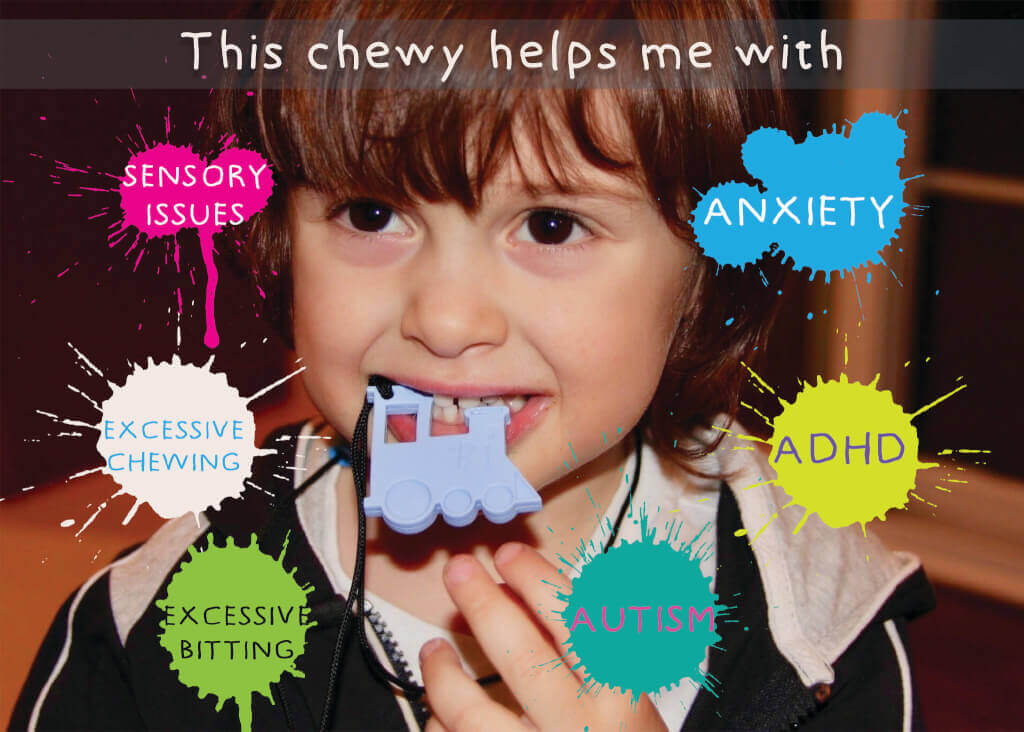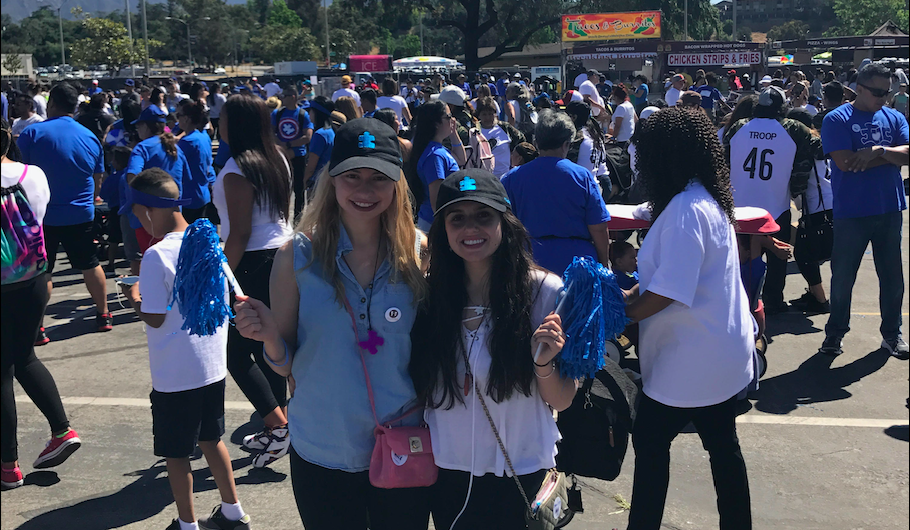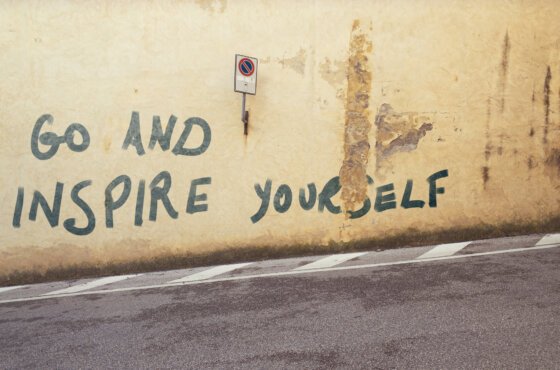How two friends created useful toys and contributed to the fight against autism

Chewing necklaces are presented in different colors. Photo: from the personal archive of Bestie Toys
Autism in the United States has already become epidemic - more than 2% of America’s future generation lives with this feature. At the same time, autism is not in a hurry to be called a disease, and most cases are subject to correction with the help of attention, patience and special therapy. ForumDaily He understood how children with disabilities in the USA live and what special toys exist for them.
The Autism Epidemic
Oksana moved to New York from Minsk on a bride's visa in 2013, and a year after her marriage, she gave birth to a son, David. The boy was born healthy and well developed. Like any mother, she wanted only the best for her child and therefore fulfilled all the recommendations of the doctors, including full vaccination. A day after the MMR vaccination, which was done in 1,5, David had a fever almost to 40 and convulsions began. Three months later, the boy was diagnosed with autism. He stopped speaking, although he had previously had words in XKUMUM around the vocabulary and skillfully used them, became aggressive, lost all interest in his parents and shouted when he was in the company of other children.
Doctors do not bind the vaccine and autism, assuring Oksana that she could not notice these features. The girl has a radically different opinion on this. Now Oksana's family is actively fighting for the normal development of her son.
“We take David to special classes. He is on a gluten-free and case-free diet that is bearing fruit. We buy him special games approved for autists. All my time is spent on a child. Fortunately, the husband earns. Only now I began to see progress: David became calmer, he began to say - “mom”, “dad”, “give” and a few simple words, he does not circle around the room for hours, as he did before. I really hope that with time we will be able to remove the manifestations of autism as much as possible, ”says Oksana.
According to Oksana, she has a lot of friends from different families who are also faced with this trouble.
The problem of autism in the United States is quite acute, since, according to statistics, the number of children with this disorder increases exponentially every year. For comparison, in 2000 there was only one patient per 150 children; in 2017, one out of 68 children aged 3 to 17 years is diagnosed with this disease. This means that over 17 years the number of children with special needs has increased by more than 50%.
Autism is considered to be a disorder that occurs as a result of impaired brain development. This developmental feature manifests itself differently in everyone, but there are many similar symptoms - children stop smiling, react poorly to family members, scream if they hear loud sounds, can be aggressive towards themselves and strangers, like to repeat the same actions or words for a long time. Typically, signs of autism appear before the age of three. Boys are diagnosed with autism or the presence of autistic traits several times more often than girls.
Scientists say that the cause of growing statistics may be the use of pesticides in agriculture, the use of products grown with GMOs, and preservatives in food. There are studies that confirm the link between vaccination and the development of autism, but they are controversial.
Meanwhile, the US Department of Health spends an incredible amount on therapy for children with special needs. According to a nonprofit organization study Austism speakswhich was published in edition JAMA Pediatrics, the cost of ensuring the life of a single patient with an autism spectrum disorder costs the state $ 2,4 million.
Most of these costs are for special education for children with special needs and are not covered by insurance, meaning they fall on the parents. Speaking about adults with autism, money is spent mainly on caring for the patient and his loss of ability to work.
Thus, the life of autists is often enclosed within the walls of a house or city where therapy is taking place, and such simple children's joys as, for example, visiting Disneyland are not available to them.
That is why in In 2010, the father of an autistic girl, Gordon Hartman, built the world's first amusement park in Texas, where it is comfortable and interesting for both ordinary children and children with special needs. Attractions include a Ferris wheel, swings, playground, miniature train and much more. Over 7 years, the park was visited by more than a million people from 50 American states and 67 countries. A third of visitors are people with disabilities and developmental disabilities, and entry to the park is absolutely free for them. The project cost more than $50 million.
Special toys for autists
“In the United States there is a federal program,“ Early Steps, ”which is designed for children with disabilities under the age of three years. In America, on average, they spend about 30 thousand dollars on the treatment of one child with autism. It is customary to help such people. Special support centers have been set up for people. Autists are trying to introduce into society. And US residents are very patient with the behavior of autists in public places, ”says Francis Levin, co-founder of the company. Bestie toys.
She knows about autism firsthand. Together with his girlfriend Sofia Dvorkina, with whom Francis has been friends for more than 12 years, they worked for some time with children who have an autism spectrum disorder. The girls worked in kindergartens for about 3 years. Sofia worked as a teacher who specializes in the early development of children, and worked with special children at home, helping them to develop social skills. In addition, the girl taught the parents of autists to communicate with their “special” children as efficiently as possible. Francis also worked in kindergartens, helping children grow.

Founders of the project. Photo: from the personal archive of Bestie Toys
At some point, the girls felt the need to create a product that could help autists in combating the problem of sensory integration dysfunction.
“Children with sensory integration dysfunction may be too sensitive or insensitive, and because of this, their brains are“ overloaded ”and they start repeating the same movements, hyperactively behave, fidget or chew something inappropriate,” Sofia says .
To help children deal with this problem, the girls came up with chewing toys, which are a safe alternative to non-edible things, biting other people, thumb sucking, oral fixation and sensory searching. The company appeared in 2017 year and got the name Bestie toys. Bestie toys helps children, parents, physiotherapists, schools, clinics and organizations that deal with children with special needs.
Bestie toys is a necklace with a rubber toy made from 100-percent non-toxic food-grade silicone. The toy is presented in three designs and in nine different colors. Useful invention approved Food and Drug Administration (FDA) and, of course, dentists.
“Our toys are aimed at oral and tactile sensory needs and come to the aid of a child in cases where he begins to worry and worry, wants to chew clothes, pencils, fingers or something else that is not intended for this. Having such a toy at hand makes it easier for the child to focus on school and lessons,” explains Francis.

Photo: bestietoys.com
So Bestie toys help children memorize information during lessons, manage their behavior at home and at school, cope with anxiety and stress.
When the two friends started producing and selling toy helpers, they decided that they could help the community more effectively if they gave some of the toys to charity. Now with every sale Bestie toys give a toy to one of the charitable organizations involved in sensory development.
“It is an absolute honor to contribute to solving the problems of children in need, and we hope to help thousands of kids over time,” the founders of useful toys unanimously say.
A special pride of Francis and Sophia is that Bestie toys manufactured in the US, and not, for example, in China. «We are proud to be American, and so is our company. Manufacturing in the USA ensures that all materials used in our products are safe. As a company, we want to make sure our customers are receiving products that are free of hazardous materials and compliant with Food and Drug Administration (FDA) regulations,” says Sophia.
Two friends are sure that someday they will change the world and make it more comfortable for children with special needs. Toys are in great demand, but The biggest challenge that the friends face is that many people do not know about the difficulties that children with autism live with every day.
Ask a question Bestie Toys
Read also on ForumDaily:
An autistic girl conquered the network with a song by Leonard Cohen. VIDEO
How I became involved in charity work in the USA
How do children from Russia live in the USA?
8 ways to get involved in charity without spending money
Subscribe to ForumDaily on Google NewsDo you want more important and interesting news about life in the USA and immigration to America? — support us donate! Also subscribe to our page Facebook. Select the “Priority in display” option and read us first. Also, don't forget to subscribe to our РєР ° РЅР ° Р »РІ Telegram and Instagram- there is a lot of interesting things there. And join thousands of readers ForumDaily New York — there you will find a lot of interesting and positive information about life in the metropolis.
-
Where in the USA to buy the medicines we are used to: a list of pharmacies5330
-
Six ways to cut your medical bill in the US436
-
Joy to Work: 37 Jobs with Lowest Stress and Good Pay419
-
What folk remedies treat the common cold in the USA: what surprises our354
-
Personal experience: why immigrants have more chances of success in the USA than Americans290
-
Burger Arthritis: How Fast Food Triggers Autoimmune Diseases233
-
XNUMX stunning US lavender farms that will take you to French Provence220
-
Actions in a terrorist attack: how to survive yourself and help others6333
-
Where in the USA to buy the medicines we are used to: a list of pharmacies5330
-
How to hit the jackpot: tips from a man who won the lottery 7 times4898
-
Life after death: what happens to places of mass executions in the USA3883
-
How to start a profitable business in the USA, if you have only $ 203281
-
4 US Social Security Traps and How to Avoid Them1493
-
Street, avenue, boulevard or drive: how to understand the classification of US streets and roads1461











